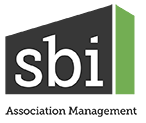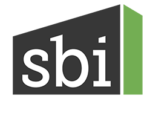With so many options out there, choosing a platform to host your virtual event can be an overwhelming task. Where do you start? What do you look for? How do you know you’re making the right choice? The pandemic has put new pressure on associations to figure this out.
Let’s keep it simple.
Even with many events returning to in-person with COVID restrictions in place, more people now realize virtual and on-demand options can offer comparable, or even better, experiences and help serve segments of your audience that might not have been able to participate before.
If there’s one thing our team has learned a lot about during the pandemic, it’s how to plan and execute a wide variety of virtual events, from small virtual meetings for a few hundred attendees to large national and international conferences up to several thousand. In our experience, we have found that we most often choose between the following three virtual event platform options:
-
“DIY” Option
-
Learning Management System (LMS)
-
Virtual Event Platform
The needs and requirements of each event are unique. Ask yourself the right questions and understand the differences between a virtual event platform, an LMS, or the simple DIY option of utilizing a videoconferencing service to host the event on your association website.
Let’s further explore the differences between each virtual event platform choice.

DIY
What is it?
- Association website as the “virtual venue”, and Zoom for connecting attendees to live or pre-recorded sessions
Features
- Offers options for virtual meetings or a virtual webinar format
- You’re in full control of the DIY platform design via your website
- Trade show element can be created, where “Booth” webpages with contact info, video, downloadable documents, etc. for exhibitors or sponsors
Budget Considerations
- This option is the most cost-effective. Using your association website as the host site, the only additional cost you will incur is the cost of the conference call software. We recommend Zoom. Zoom offers reliable service and comes in at a lower price point.
- The cost for Zoom will depend upon how many concurrent sessions your event has and how many attendees your event has. However, on average, your range will probably be $15 – $500.
- $15 – $1800+ Depending upon the number of hosts, attendees, and type of Zoom license, the price can fluctuate.
You can also purchase additional software to enhance the virtual experience of your DIY Platform.
For example:
- GatherTown (great for poster sessions and/or exhibit halls)
- Remo (great for networking)
- SurveyMonkey (for session evaluations)
- Kahoot! (great for pre-event Trivia)
Time Required to Set Up
Once Zoom is purchased, the accessibility is instantaneous. Depending on the complexity of your event, we suggest giving yourself at least two weeks to finalize and set the Zoom accessibility and the buildout of your webpages for the virtual venue. Things to consider that you will need to do:
- Make unique Zoom links for each track, concurrent session, day, etc.
- Prevent non-registered attendees from joining your event by locking down access to the event webpages Zoom links, and send access/log in instructions to your registrants.
Staffing Needs
Virtual events will still require staff support. A basic formula to remember is “Staff = Maximum number of concurrent sessions at any given time + 1 Conductor”.
For a virtual event, assign one staff member to manage each Zoom conference line. We also suggest having a “Conductor” onsite. The role of the Conductor is to make sure that all staff and other conference lines meet their cues to orchestrate the virtual event. The Conductor does not manage a conference line, and can more easily problem solve tech or speaker issues for the virtual event team.
Pros
- Many individuals are familiar with Zoom
- Offers a simple navigation experience
- Breakout room capabilities (if Zoom Meetings)
- Spotlight capability for speakers
- Integrated Polling and Quizzes for attendee engagement
- Recording capabilities
Cons
- Varying capabilities depending upon Zoom Meetings or Zoom Webinar. You can read about comparisons on Zoom.
- Limited features; such as lacking trade show element, poster session element
- Can be difficult to track attendance
- All management and build-out of platform is manual
Learning Management System (LMS)
What is it?
Also known as an LMS, a learning management system is software for e-learning. An LMS administers and tracks educational courses.
Features
- Detailed attendance tracking
- Session exam capabilities
- Automation of CE credit and certificate administration
- Can support prerecorded, live, or hybrid sessions
Budget Considerations
LMS prices range and come in a variety of fee structures (i.e pay per month, pay per year, or pay per user). There are free options, but most of them are very basic and you will need to pay for features to make the program beneficial. Additionally, most learning management systems will have an initial setup fee.
- Pay per month range: Free to $500+
- Pay per year range: Free to $5500+
- Pay per user range: Free to $10+/per person
- Set up fee range: $500 – $25000+
If you think an LMS is the way to go for your event, a good place to start in narrowing down the types of learning management systems is this 2018 eLearning Blog article.
Time Required to Set Up
Give yourself at least one month, depending on the complexity of your event, to set up an LMS. You will need time to negotiate and plan the features needed for your LMS. Then you will need to start compiling materials, building out the platform, and setting up any credit or certificate administration systems.
Staffing Needs
The staffing requirements when using an LMS platform for your event will depend on whether or not you are offering live or pre-recorded content.
If using the LMS for live sessions, the same basic formula for any live event applies: Staff = Maximum number of concurrent sessions at any given time + 1 Conductor.
Pre-recorded content can be uploaded to the LMS, and the delivery of the content can be automated and allow attendees to self-pace their event or learning experience.
Pros
- Easy tracking and management of CEs
- Can automate certificates of completion
- Provides more access to learning than just in-person courses
- Reduces learning costs
Cons
- Set-up time
- Set-up costs
- Varying features depending upon LMS
- Access/utilization can be time-limited
Virtual Event Platforms
What is it?
A third-party virtual event platform typically comes with tools and support to execute an online event. These platforms are independent of an association website. Think conference app, but online on your desktop (or mobile if your platform supports it).
Examples:
Features
Depending upon the virtual platform chosen, the features can be endless. However, some common features that you will see in most virtual platforms are:
- Trade show capability
- Networking capability
- Poster session capability
- Gamification
- Attendee-to-attendee communication
- Social Media integration
- Building automation
- Platform technical support staff
- Detailed analytics
- Integrated Polls
- Green rooms
Budget Considerations
Virtual Event Platforms have an incredibly wide range of prices. Not only do platform prices vary based on brand, but even within one brand of platform the prices can vary greatly depending upon the features selected, level of technical support, and the number of attendees.
Platforms can range from $500 to $10000+. A good resource on pricing and feature comparison can be found on the Event Manager Blog.
Time Required to Set Up
Similar to an LMS, we suggest giving yourself at least one month to set up a virtual event platform. You will need time to negotiate and plan the features needed for your event. Consider the staff time required to learn how to navigate the platform, as some can be quite robust. Also take into account the time needed to load the schedule, speaker and sponsor information, and plan for any additional features or integrations such as social walls, attendee messaging, and more.
Conveniently, most virtual event platforms offer the ability for speakers and sponsors to have access to build out their own session pages or booth pages. This means that you are no longer the middle man for compiling and tracking down these materials and uploading them to the platform. Virtual event platforms also provide templates for importing information that will streamline the building process, and you may have access to tech support from the vendor to assist with the learning curve.
Staffing Needs
The staffing requirements when using a virtual event platform will depend on whether or not you are offering live or pre-recorded content.
If offering live sessions: Staff = Maximum number of concurrent sessions at any given time + 1 Conductor.
Pre-recorded content can be uploaded to the virtual event platform, and the delivery of the content can be automated and allow attendees to self-pace their event or learning experience.
Pros
- Lots of feature options to choose from
- Typically comes with tech support
- Customization
- Gamification
- Speakers can customize their session page, saving staff time
- Sponsors can customize their booths, saving staff time
Cons
- Costly compared to other options and can be quite expensive
- Access/utilization of the platform can be time-limited (i.e. 6 months)
- Staff will need to learn a new platform
- Set-up time: can be labor-intensive and longer learning curve for staff
We hope you found value in this breakdown and that it helps guide you toward a platform that works best for you and your association!
We are experts in planning and creating association events large and small! If you can dream it, our team can build it. Contact us today to learn more.




